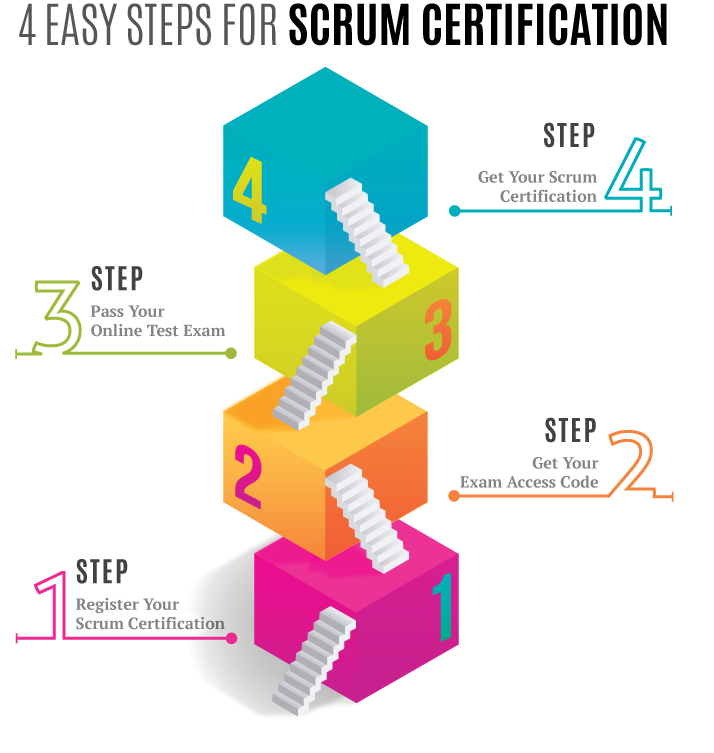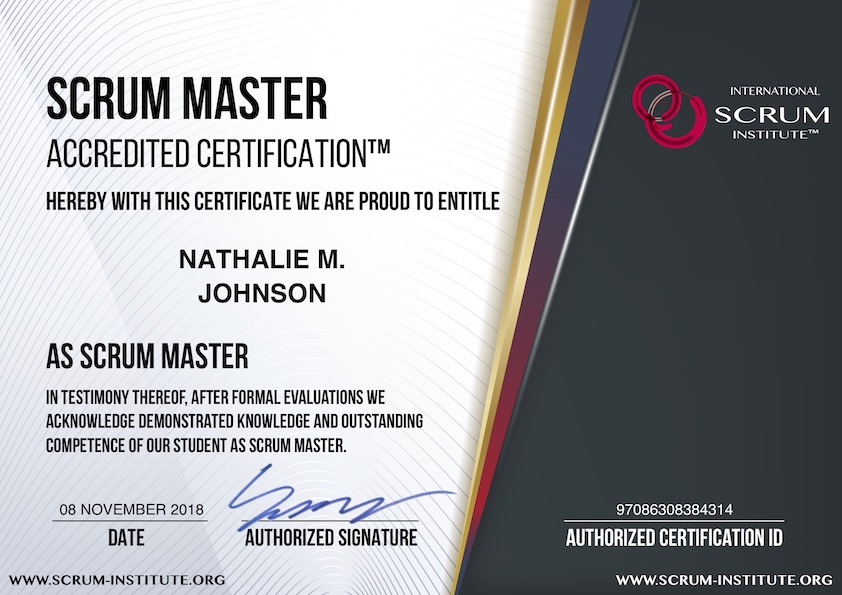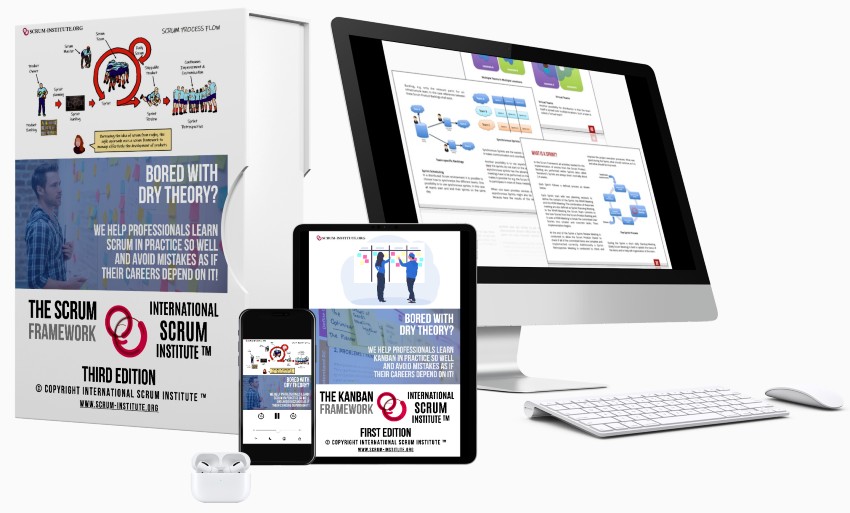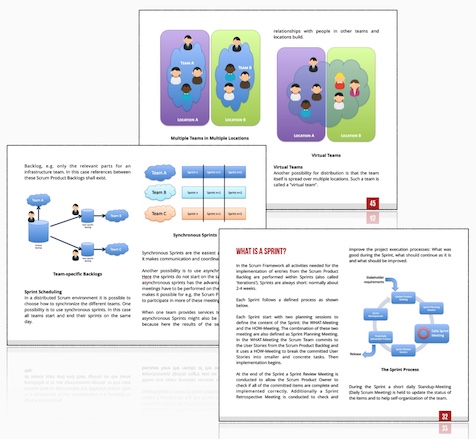Scrum User Stories: A Comprehensive Overview for Effective Scrum User Story Management
Definition: A Scrum user story is a concise and user-centric description of a desired functionality or feature within an agile scrum project, serving as a fundamental unit of work in the Scrum framework. Typically written from an end user's perspective, a user story articulates the who, what, and why of a specific requirement, emphasizing collaboration and communication among cross-functional teams. It follows a simple template that includes a user role (actor), a desired action or goal, and a benefit or value. User stories facilitate agile development by fostering a shared understanding of project requirements, promoting incremental progress, and enabling prioritization based on user needs and feedback.
Scrum User Stories – It's like you're crafting a movie plot for each feature that your software or product needs—just shorter, simpler. Each story brings with it the character (the user or the actor), a goal (the feature they need), and why it matters (the benefit).Now imagine these individual stories joining hands to form an interconnected web of desires, expectations, and solutions—a backlog. Surprising as it may sound, managing this backlog—prioritizing, refining—is akin to directing a movie where every story is crucial yet fluid. The International Scrum Institute is set to play the perfect guide in your journey towards mastering these Scrum User Stories and their effective management.
To write a clear and effective user story in Scrum, follow the format of "As a , I want so that ". For example, "As a customer, I want to be able to easily track my order status so that I can plan my schedule accordingly."
Characteristics of Scrum User Stories
The entries in the Scrum Product Backlog are often written in the form of User Stories. The most important characteristic of a Scrum User Story that it tells a short story about someone using the product. It contains a name, a brief narrative, and acceptance criteria and conditions for the story to be complete. The advantage of user stories is that they focus on exactly what the user needs/wants without going into the details on how to achieve it.
There are different recommendations how to define User stories. A template could be as follows:
As an [actor], I [want|must] [action] so that [achievement]
Or in a shorter version:
As an [actor], I [want|must] [achievement]
Actor: The 'owner' of the user story. This is often a user but it is recommended to be more specific here. By using specific actors (e.g. "Administrator", "Logged in Customer", "Unauthenticated visitor") it’s easier to understand and sets the user story into context.
Action: What the actor want to do. If it is a mandatory action it can be prefixed by "must". Otherwise "want" is used.
Achievement: What the actor wants to achieve by performing the action. This is the result from executing the action seen from the actor’s point of view.
 Example User story
Example User story
Scrum User Story - An Overview
In the dynamic world of Agile project management, user stories are an essential tool for effectively communicating customer requirements. They breathe life into otherwise abstract project requirements by presenting them from the end-user’s perspective.
They are concise, informal descriptions of features written with clear end-user (actor of the user story) needs in mind, often following the structure "As a [user/actor], I want [feature] so that [benefit]." This simple yet powerful format ensures that each user story articulates who will use the feature, what they want, and why they want it. By encapsulating the "who," "what," and "why," user stories provide a comprehensive and holistic view of the requirement.
For instance, consider a scenario where the end-users of an e-commerce website require a more efficient search function to find products easily. A corresponding user story could be framed as: "As a buyer, I want a more efficient search function so that I can quickly find the products I am interested in." This succinctly captures the essence of the feature from the user's perspective and specifies its value to the end-user.
Furthermore, user stories act as placeholders for detailed conversations between stakeholders, product owners, and development teams. They initiate meaningful discussions about customer needs, thus facilitating collaboration and understanding among team members and stakeholders.
In addition to serving as communication tools, user stories play a pivotal role in setting priorities within the product backlog. They help in determining which functionalities are most crucial for end-users (actors) and which should be prioritized for development first.
The Role of User Stories in Agile Project Management
Understanding the concept of user stories in Agile project management is greatly beneficial as it provides project teams with a clear understanding of customer needs. It also enables them to deliver exceptional value by focusing on features that truly matter to end-users.
It’s like building a house – you wouldn’t start construction without a blueprint or understanding the homeowner's requirements. Similarly, user stories lay down the foundation and guide the development team throughout the project journey by aligning everyone’s efforts behind fulfilling customer expectations.
Given their significance in Agile environments, it is crucial for organizations to prioritize educating their teams about creating effective user stories. At the International Scrum Institute, comprehensive resources are available to assist teams in mastering this fundamental aspect of Agile methodology. These resources offer insights into crafting refined user stories and outline best practices for managing them within product backlogs.
Now equipped with a thorough understanding of the significance of user stories in Agile project management, let's delve into the art of crafting effective and impactful user stories in our next section.
Effective Creation of Scrum User Stories
User stories are at the heart of the agile development process, and crafting them effectively is key to the success of any project. Here are some essential principles to keep in mind for the effective creation of Scrum user stories.
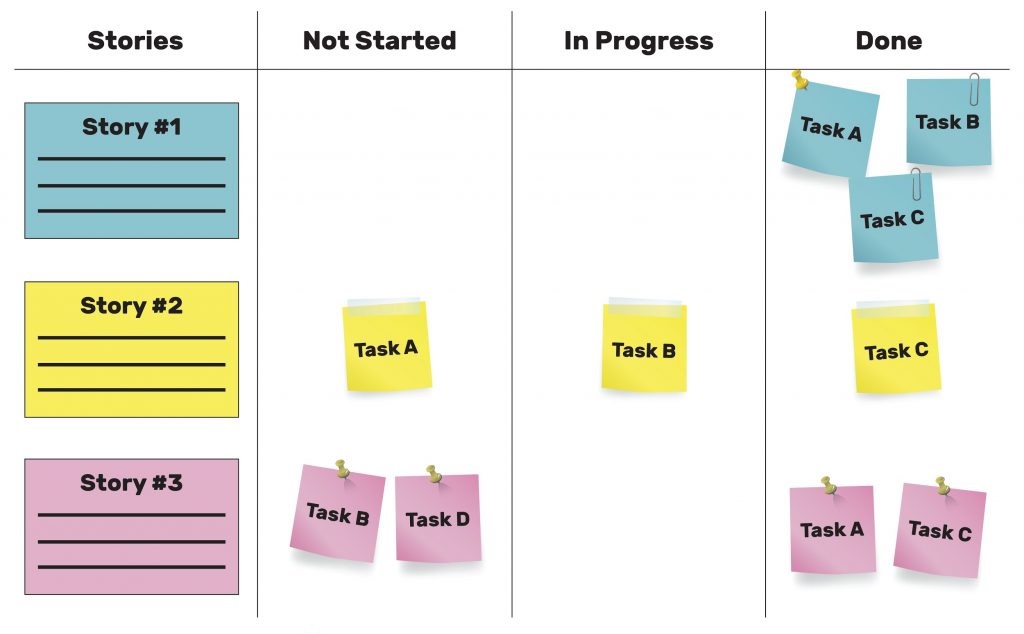 Scrum User Story
Scrum User Story
Understanding User Needs
Understanding the pain points and needs of the end-users is the first crucial step in creating impactful user stories. Taking the time to empathize with the users and gain a deep understanding of their experiences, desires, and challenges ensures that the user stories developed truly address real user needs and deliver tangible value. Techniques like surveys, interviews, or observational studies can gather insights directly from the end-users themselves.
Structuring Stories
When structuring user stories, it's essential to make them SMART:
- Specific - Define what needs to be done
- Measurable - Identify how success will be measured
- Achievable - Ensure feasibility within given constraints
- Relevant - Align with business objectives and user needs
- Time-bound - Have a clear timeline for delivery
This provides a clear framework for the development team and ensures that each story contributes directly to the project goals and delivers real value to the end-users.
Involving the Team
Involving the entire team in the story creation process fosters collaboration and ensures a shared understanding of the requirements and end goals. Perspectives from different roles such as developers, designers, testers, and product owners create a holistic view of what needs to be achieved. This collaborative approach uncovers valuable insights and potential challenges early on, leading to more refined user stories that better represent the collective vision of the team.
Now that we understand how crucial it is to empathize with the end-users, structure our stories effectively, and involve the entire team in the creation process, we're equipped with foundational principles for crafting compelling and impactful Scrum user stories.
Armed with a strong foundation in user story creation principles, let's now explore techniques for prioritizing these stories in order to maximize their impact on agile projects.
Techniques for Prioritization of User Stories
As your product backlog grows, it becomes essential to prioritize user stories effectively. After all, not every feature is of equal importance, and some may have a more significant impact on customer satisfaction or product development than others. Here are two powerful techniques for prioritizing user stories that can help you make informed decisions and maximize the value delivered by your Agile team.
MoSCoW Method
The MoSCoW prioritization technique categorizes user stories into four important categories: Must have, Should have, Could have, and Won't have at this time. This approach is simple yet effective in helping teams identify the critical features for development based on their urgency and importance.
- Must Have: These are the non-negotiable functions or features that are indispensable for the product's basic operation or meeting fundamental user needs. Without these, the product’s primary purpose would be compromised.
- Should Have: These represent features that are important but not critical for initial release. They contribute to product completeness and might be deferred if necessary.
- Could Have: These are desirable but optional features that would enhance the user experience or add value, but can be put off to a later date without affecting the product’s core functionality.
- Won't Have: Features that are deemed unnecessary at present, and are deliberately set aside from the current scope of work.
The clear classification provided by the MoSCoW method allows stakeholders to align their expectations with the Agile team and assists in forging a consensus on what should be developed first.
Kano Model
In addition to MoSCoW, consider employing the Kano model to classify user stories based on their impact on customer satisfaction. The Kano model distinguishes between three types of customer attributes: basic, performance, and excitement.
- Basic Attributes: These are fundamental requirements that customers expect and often take for granted. When met, they do not necessarily increase satisfaction, but their absence can result in dissatisfaction.
- Performance Attributes: These attributes directly correlate with customer satisfaction – the better the performance attribute, the higher the satisfaction. However, diminishing returns apply, as excessive enhancements in performance attributes do not always lead to increased customer delight.
- Excitement Attributes: These attributes have the potential to surprise and delight customers when present but do not heavily impact satisfaction when absent.
By identifying which category each user story falls under, product owners gain deeper insights into user priorities—enabling them to make informed decisions about feature development that align with customer needs and desires.
The utilization of these prioritization techniques ensures that your Agile team focuses on delivering value through features that truly matter, avoiding wasted effort on non-critical elements while enhancing overall customer satisfaction.
With an understanding of effective user story prioritization techniques, it's time to shift our focus towards exploring the crucial role of stakeholders in shaping and refining these stories.
Role of Stakeholders in Scrum User Stories
In the world of Scrum, stakeholders are like the guiding stars. They're the ones who know exactly what the users want and what the business needs. Their input is essential for creating user stories that truly reflect the requirements and expectations of both the users and the business. Without their involvement, it's like driving a car without a map—directionless and likely to end up lost.
For instance, imagine developing a new mobile banking app. The stakeholders are representatives from marketing, customer service, IT security, and several technology departments. Each stakeholder brings a unique perspective that collectively forms a well-rounded view of what the app needs to do. Marketing might emphasize the need for an intuitive and appealing user interface, customer service might prioritize seamless interaction features, while IT security would be focused on robust security protocols.
So, just as it takes a village to raise a child, it takes input from all these different perspectives to bring a user story to life successfully.
Involving stakeholders in user story refinement helps in several ways:
- Real-world Relevance: They provide insights into real-world scenarios and user needs, ensuring that the user stories are aligned with practical business requirements.
- Feedback Loop: By actively engaging stakeholders, teams can ensure that feedback is gathered at every stage of the process, allowing for iterative improvements.
- Alignment with Business Goals: Stakeholders help ensure that user stories are tied to larger business objectives, thereby supporting more strategic decision-making.
For instance, if stakeholders are not involved in shaping user stories for our mobile banking app, there could be a risk of creating features that don't align with customer expectations or fail to meet regulatory standards. As a result, this could lead to delays or even costly reworks down the line.
Moreover, involving stakeholders right from the start not only fosters a sense of ownership and responsibility but also nurtures an environment where collaboration and communication thrive.
So by now, it's clear why the involvement of stakeholders in refining Scrum user stories is pivotal. Their insights and guidance steer the direction of user stories towards meeting business objectives and addressing user needs effectively.
As we grasp the indispensable role of stakeholders in shaping Scrum user stories, let's now pivot towards unraveling the art of complexity estimation for effective Scrum management. (See more about Scrum Effort Estimation)
Complexity Estimation for Effective Scrum Management
In Scrum, each user story needs accurate estimation to understand the effort and complexity required for its implementation. One of the most popular methods for this in the world of Scrum is Planning Poker. This technique uses a deck of cards with numbers representing different levels of effort or complexity.
Team members discuss a user story and then, individually, select a card that represents their estimate. The cards are revealed simultaneously, and any significant differences in estimates are discussed. This process continues until a consensus on the story's complexity is reached.
This way, everyone's opinion is considered, encouraging active participation from all team members. The shared estimates help the team understand each other's perspectives better and may even uncover previously unnoticed complexities or challenges within the user story.
Consider a user story about creating a login page for an application. One team member might think it's straightforward and suggest a 3, while another might consider the various validation rules needed and propose an 8. By discussing these differences openly, the team can gain a deeper understanding of the task at hand and potentially identify components that hadn't been previously considered.
The effort estimates from Planning Poker are not only valuable for sprint planning but also for resource allocation and understanding the capacity of the team. During sprint planning, the product owner uses these estimations to prioritize user stories based on their complexity and potential value delivery.
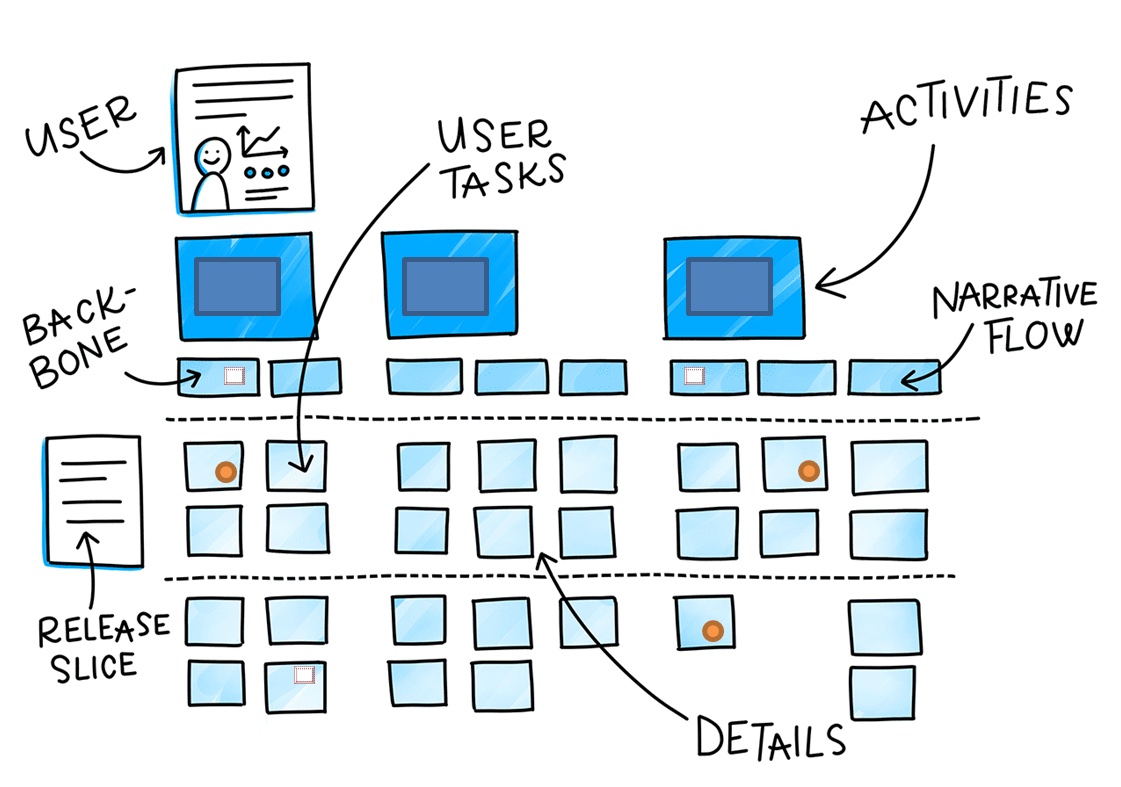 Scrum User Story Mapping
Scrum User Story Mapping
These estimations play a crucial role in determining how much work can be realistically taken on during a sprint, ensuring that the team doesn't overcommit and face burnout or quality issues. It also helps in identifying dependencies between user stories, enabling better sequencing and dependency management.
Effective complexity estimation through techniques like Planning Poker is fundamental for maintaining transparency, fostering collaboration, and making informed decisions in Scrum project management.
With a clear understanding of how complexity estimation influences Scrum project management, let's now explore how Scrum user stories are utilized for effective product backlog management.
Using Scrum User Stories for Product Backlog Management
User stories act as the voice of the customers, guiding the development team in creating products that align with the end-users' needs. They provide valuable context, ensuring that the development team understands what is expected and the value it will add to the end-users. When utilized effectively, user stories facilitate communication clarity and streamline decision-making by providing a comprehensive understanding of customer requirements, which is integral to maintaining a well-organized and refined product backlog.
In practice, it's beneficial to involve multiple stakeholders, such as customers, end-users, product owners, and developers in crafting user stories. The diverse perspectives ensure that the user stories encapsulate varied requirements and use cases, providing a more holistic view of the product features.
For instance, in a software development project for a banking application, a user story could represent a customer's need to transfer funds between accounts seamlessly. This helps the development team comprehend specific functionalities required and the potential impact on the user experience.
Moreover, user stories are dynamic in nature and can be continually refined and reprioritized based on evolving customer needs and market trends. By updating and re-evaluating these user stories regularly, the product backlog remains agile and adaptable to changing business demands.
It's crucial for every user story to maintain clarity and specificity regarding the functionality or feature it represents. A well-structured user story typically follows the format: "As a (role), I want (feature) so that (benefit)."
Furthermore, incorporating acceptance criteria within each user story adds an extra layer of detail, defining clear conditions that must be met for a feature to be considered complete. These criteria serve as objective measures of when a feature fulfills its intended purpose, aligning both the development team and stakeholders on the expected outcomes.
In our banking application example, an acceptance criteria can specify that when transferring funds between accounts, the system should validate account credentials and generate transaction receipts promptly. This ensures that all stakeholders have a shared understanding of what constitutes a successful implementation of this particular user story.
Effectively harnessing user stories empowers product owners to crystallize customer requirements and enables development teams to craft solutions that resonate with end-users' needs. Through consistent refinement of these stories alongside evolving business landscapes, organizations can nurture an adaptable product backlog ready to meet dynamic market demands.
By leveraging the versatility of scrum user stories, organizations can ensure that their product backlog remains responsive to ever-changing customer needs and market dynamics. This adaptability is key to delivering products that truly resonate with end-users.
What are the key components of a scrum user story?
Answer: The key components of a Scrum user story include the role or persona, a brief description of the desired functionality, and acceptance criteria. These components help in understanding the end-user's perspective and provide clear guidelines for development. According to a survey conducted by Stack Overflow in 2023, 87% of Agile teams emphasized the importance of well-defined user stories for effective backlog management.
How does a user story contribute to sprint planning and prioritization in scrum?
Answer: User stories contribute to sprint planning and prioritization in Scrum by providing a clear understanding of the user's perspective, needs, and desired outcomes. They allow the development team to align their efforts with the user's goals, helping to determine which user stories should be addressed first based on their value and complexity. According to a survey conducted by VersionOne in 2022, teams that effectively prioritize user stories during sprint planning experience increased productivity and customer satisfaction.
What is the purpose of a user story in scrum methodology?
Answer: The purpose of a user story in Scrum methodology is to capture the requirements and needs of the end users or customers. It serves as a communication tool between the development team and stakeholders, enabling better understanding and collaboration. User stories focus on delivering value to the customer and help prioritize backlog items based on user feedback and business value. According to a survey conducted by the Scrum Alliance, 76% of respondents agreed that user stories improved their team's ability to deliver customer value.
How do you write effective user stories for agile development?
Answer: To write effective user stories for agile development, focus on the "Three C's": Card (a brief description), Conversation (discussing the details), and Confirmation (criteria for acceptance). Keep user stories concise, specific, and prioritized based on customer value. According to a survey by VersionOne, 65% of agile teams found keeping stories small and well-defined contributed to project success. Regular collaboration between developers, product owners, and customers is also crucial to ensure shared understanding and alignment on requirements.
Are there any best practices or common pitfalls when using user stories in scrum?
Answer: Yes, there are several best practices and common pitfalls to consider when using user stories in Scrum. Best practices include clearly defining the role, goal, and benefit of each user story, prioritizing stories based on value and complexity, involving the entire team in writing and estimating the stories, and regularly refining and updating the backlog. Common pitfalls include creating overly detailed or technical stories, not involving stakeholders in story creation, neglecting to break down large stories into smaller ones, and failing to update or groom the backlog regularly. According to a survey by the Scrum Alliance, teams that follow these best practices have reported improved communication (74% of respondents), better alignment with business objectives (68% of respondents), and increased customer satisfaction (62% of respondents).
Recap for Scrum User Stories
In the realm of Scrum User Stories, a crucial aspect is the meticulous mapping of requirements, where each user story serves as a valuable part of the iterative development process. These user stories, often considered the building blocks of epics, contribute to the overall success of an iteration by clearly outlining something significant for the development team to work on. The identification of epics, comprising multiple user stories, ensures a comprehensive approach to project planning and execution. Throughout this article, we've explored the benefits of employing user stories in the agile methodology, shedding light on how they enhance communication within a company and streamline the delivery of valuable information.
Understanding the significance of user stories involves recognizing their role in delivering tangible benefits to both the development team and the end-users. Concrete examples provided in this article illustrate how user stories facilitate effective testing strategies, ensuring that each deliverable meets the specified criteria. By breaking down complex features into manageable components, user stories enable a company to navigate the iterative development process with greater ease. This approach not only fosters collaboration but also allows for adaptability as project requirements evolve over the course of each iteration.
In conclusion, user stories stand as a pivotal element in the agile framework, offering a structured approach to project management. Whether it's breaking down an epic into manageable parts, facilitating efficient iteration planning, or enhancing communication within a company, user stories play a crucial role in delivering successful outcomes. As we've seen through various examples and discussions on testing strategies, the incorporation of user stories adds value to the development process by ensuring that each deliverable aligns with the overall objectives. For those seeking to deepen their understanding of agile methodologies, the International Scrum Institute provides a valuable opportunity to register for a Scrum certification, further empowering individuals to navigate the dynamic landscape of project management with expertise and confidence.
Share It With Your Colleagues and Friends to Help Them Learn:
Scrum User Story - The Best Guide for Scrum User Stories
|
|

|

|

|

|
|
 SCRUM INSTITUTE™
SCRUM INSTITUTE™



